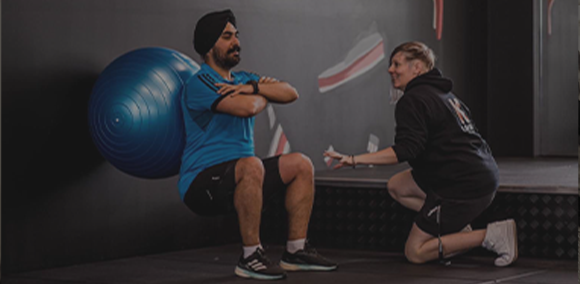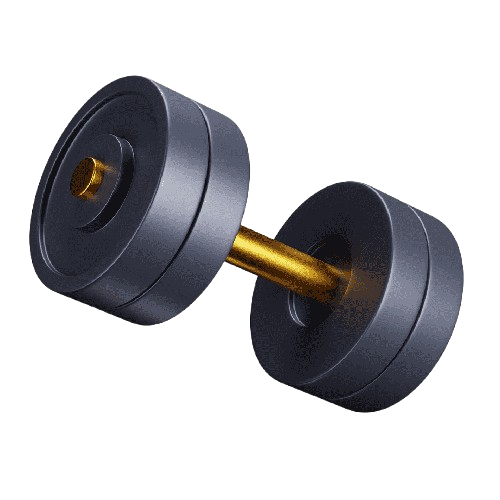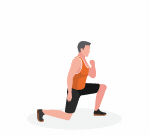ALWAYS OPEN! WE WORK 24/7















≫ 10% Discount For Essential Services Workers (Paramedics, Police, Fire Brigades, Special Forces And Nurses)
≫ 10% Discount For Students, Seniors And Concession Card Holders)
≫ Access full gym, group classes, sauna. No obligation—just real results. Classes subject to availability. E-Volt and consult not included.
Join Now










Bhangra Fit is a high-energy cardio dance workout that is guaranteed to make you sweat while you have fun and learn easy-to-follow moves to the most upbeat music! Bhangra Fit is not a Bhangra dance class, but it is a dance-fitness class set to Bhangra tunes. The dance workout includes continuous and rhythmic movements. Thus, making it a good aerobic workout for your body. It also helps tone your arms, hips, and leg muscles. (DISCLAIMER: All class attendees must DISCLOSE all or any pre-injuries before starting any class)
Fitness boxing has adapted boxing movements into exercise routines that bring many physical and mental health benefits and require you to think, change your posture, and change your position. You punch and squat as you perform boxing basics while getting a good workout. (DISCLAIMER: All class attendees must DISCLOSE all or any pre-injuries before starting any class)
This class is a variety of body weight exercises and challenges. It incorporates correct posture and techniques, effective usage of gym equipment correctly and all variations – (Over time). Whilst improving your overall health, dropping body fat, gaining lean muscle and strength. This class can cater for all fitness levels and is mainly low to medium intensity and keeps building up over a 12 week period. You will “Gain Knowledge, Not Just Fitness” – Justine Bodde. (DISCLAIMER: All class attendees must DISCLOSE all or any pre-injuries before starting any class)
A 45 minute high intensity class designed to improve cardiovascular endurance, fitness as well as core strength and stamina. (DISCLAIMER: All class attendees must DISCLOSE all or any pre-injuries before starting any class)
This core class is designed to strengthen the abs and back muscles with non-stop core sculpting moves. This class is a great addition to anyone’s fitness routine. (DISCLAIMER: All class attendees must DISCLOSE all or any pre-injuries before starting any class)
Hip Hop has both aerobic and anaerobic benefits. This is because these classes increase your heart rate and get you breathing hard while at the same time working to strengthen your thighs, glutes, calves, and other muscles throughout your whole body. (DISCLAIMER: All class attendees must DISCLOSE all or any pre-injuries before starting any class)
Cross training style cardio class, an energy booster with heaps of variety! (DISCLAIMER: All class attendees must DISCLOSE all or any pre-injuries before starting any class)
Yes, you possibly guessed it. This class is strategically put together with the aim of hitting all levels of sweat! Have you ever wanted to improve your Cardio and strength? This class is designed as a circuit to improve your lung capacity, resistance, and duration, improve your breathing, learn cardio techniques and overall health and well-being. From beginners to Advanced, this style aims to burn calories and body fat, leaving you sweating for more. (DISCLAIMER: All class attendees must DISCLOSE all or any pre-injuries before starting any class)
Hiit stands for; High Intensity Interval Training and is combined with a mixture of ‘fitness Boxing’ techniques. This style incorporates exercises ranging from cardio, abdominal work and compound movements and of course all things BOXING! This class will challenge you and leave you feeling fit, sweaty and accomplished. Some parts of this class are single work and partnered up work. So bring a friend! Suitable for all fitness levels. (DISCLAIMER: All class attendees must DISCLOSE all or any pre-injuries before starting any class)
Pilates is a mind, body, and spirit practice with benefits that include improved posture, better coordination and balance, increased lung capacity, improved concentration and focus, increased body awareness, stress management, and injury prevention. Floor work is a great choice for everyone from Pilates beginners to advanced students because the exercises not only can build in difficulty, but every exercise can be modified to decrease or increase the level of challenge. Floor Pilates helps build a strong, balanced body and increases flexibility. (DISCLAIMER: All class attendees must DISCLOSE all or any pre-injuries before starting any class)
Pilates is a mind, body, and spirit practice with benefits that include improved posture, better coordination and balance, increased lung capacity, improved concentration and focus, increased body awareness, stress management, and injury prevention. Floor work is a great choice for everyone from Pilates beginners to advanced students because the exercises not only can build in difficulty, but every exercise can be modified to decrease or increase the level of challenge. Floor Pilates helps build a strong, balanced body and increases flexibility. (DISCLAIMER: All class attendees must DISCLOSE all or any pre-injuries before starting any class)
Strength and conditioning class with a focus on moving correctly in order to build a strong body. (DISCLAIMER: All class attendees must DISCLOSE all or any pre-injuries before starting any class)
A mellow paced body conditioning technique that combines breathing, stretching and strengthening to achieve and maintain optimal posture. Allow your body to move freely and efficiently by strengthening your deep abdominal and core stabilisers while relaxing tense neck and shoulder muscles. (DISCLAIMER: All class attendees must DISCLOSE all or any pre-injuries before starting any class)
Zumba is an interval-style dance fitness party that combines low-intensity and high-intensity moves. You’ll burn lots of calories as you move to the rhythm with Latin-inspired dance moves. The best part of it all is that it doesn’t even feel like exercise. You may feel sore in places you never knew existed, but it gets results. Zumba targets lots of different muscle groups at once for total body toning. (DISCLAIMER: All class attendees must DISCLOSE all or any pre-injuries before starting any class)

